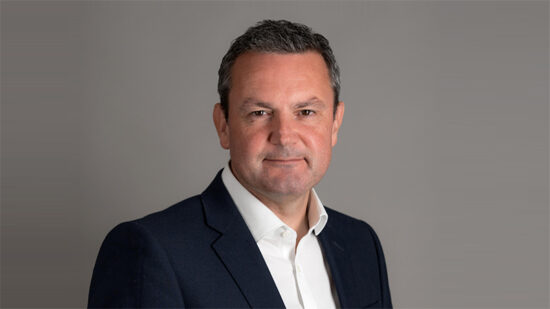According to industry experts, the main factors and trends affecting M&A in the financial advice market at the moment, include ‘evergreen’ issues such as consolidation, regulatory change and technology.
But another significant factor made an entrance last year: the hike in interest rates, which have since continued to rise in the UK until recently when they stayed at 5.25%.
So, what impact has the spike in interest rates had on M&A deals in the advice market? Is it now too costly to buy in this market, with the result that buyers have stepped back from acquiring advice businesses? And what about those who are still looking to buy − how are deals being funded? Could it be the case that only consolidators and private equity-backed firms can afford to buy firms in the advice market nowadays?
International Adviser asked Alti Tiedemann Global, Close Brothers Asset Management, Dyer Baade & Company, Gunner & Co, Lawsons Network, Loyal North Group, Shard Capital and Succession Wealth for their insight into the state of play and the current trends affecting M&A deals.
‘Major players remain as active as ever’
Louise Jeffreys, managing director of Gunner & Co, said that buyers are still active.
She added: “The buyer market remains buoyant, with increasing demand for bigger, multi-adviser firms continuing to drive increases in valuations.
“While some smaller, debt-backed buyers have chosen now to pause acquisitions and focus on integration, the major players currently remain as active as ever.
“Although the overall cost of growing through acquisitions has increased, the sector remains attractive due to the multiple value drivers that financial planning firms offer.
“The high proportion of recurring income reduces investor risk, paired with the opportunity to broaden out the service offering and sell more services into newly acquired clients.”
Broadly immune to economic backdrop
Richard Bacon, head of business development at Shard Capital, said that the economic environment has had a limited impact.
He said: “The financial services sector has long been a hotbed of M&A activity and is broadly immune to the oscillations of the wider economic backdrop in the UK. I don’t think that has changed, and it’s the maturity of this M&A cycle that gives it further resilience in a rising-interest-rate environment.
“It’s a proven concept; investors can see the timelines and multiples that are achievable. It is a very well-researched sector from an M&A perspective, and that wealth of data based on previous transactions allows risks to be reduced. As a result, ‘attractive’ M&A targets remain highly in demand and hotly contested.
“I think we need to consider the acquirees as two quite distinct groups. If you are a small-to-medium-sized IFA business with an eye on expansion and looking to borrow in the traditional way to facilitate that growth, you are probably thinking very seriously about whether now is the time to proceed, given current borrowing costs and the associated uncertainty in the short to mid-term.
“But that group does not reflect the bulk of the M&A activity that we have witnessed in the UK over the last 10-15 years. That has been perpetuated by businesses that are operating on a far larger scale and have been active in the sector for a prolonged period.
“These businesses have either built a healthy ‘war chest’ over that time or have longstanding relationships with a PE partner. For this group, the grass is as green as ever. Whether this relatively unchecked M&A cycle is good for consumers, and in keeping with the FCA’s continued push for better client outcomes, is of course a far broader conversation.”
Regulatory changes and the impact of the banking crisis
Robert Weeber, president of international wealth management at Alti Tiedemann Global, said: “In our view, the interest rate environment hasn’t yet hindered dealmaking.
“One notable trend is the increasing appetite for US managers to acquire ex-US advisory businesses. While US onshore remains the most active M&A market globally, the onshore opportunity set is rapidly diminishing and consequently valuations are rising.
“Naturally, US managers are looking to Europe and other regions for M&A opportunities. We see this opportunity as something of a mirage unless the firms are equipped with deep local expertise in the new markets they are contemplating. Failing that, it is easy to underestimate the complexity of operating international cross-border advisory firms.
“However, firms that have the ability to leverage an on-the-ground presence and local know-how while maintaining a broader international perspective will be best positioned to effectively identify and seize opportunities to better meet the needs of their clients.
“Funding methods and deal structures in the wealth and asset-management sector evolve in response to market conditions, changes in interest rates, and investor preferences. More recently, regulatory changes and the lasting impact of the banking crisis have significantly influenced how consolidation deals are financed in the industry.”
‘Primary reason for buyers stepping back’
Jennifer Toon-Davenport, membership and acquisition director at Lawsons Network, observes that interest rates are likely to be behind decisions not to buy.
She added: “The rise in interest rates is almost certainly the primary reason for buyers stepping back from acquiring advice businesses. Many industry insiders are familiar with deals that were under negotiation before interest rates began to rise but are now collapsing.
“Higher interest rates have inevitably lowered valuations, as fund income calculations have to be reworked but there are other knock-on effects. Mainly, this pertains to the funding source for consolidators doing the acquiring, specifically hedge funds. The large bank failures in the US have given rise to understandable caution and new stress-test modelling has compounded the effect of higher interest rates, driving average valuations to levels not seen for decades.
“In addition, there has been a rise in the number of small advisers looking to sell up ahead of the new Consumer Duty regulations which came into force at the end of July.
“While the regulator acknowledges the hard work that many firms have undertaken to meet the new higher standards, it also says that some have more to do ahead of the deadline. The additional cost to advisers is another factor to consider which is, unsurprisingly, lowering valuations even further at a time when financing for acquisitions is in decline.”
Cooling down from red hot
Daniel Baade, chief executive of Dyer Baade & Company, notes a cooling of enthusiasm from some quarters.
He added: “Almost all M&A deals require some form of debt financing, as only a very small number of acquirers have sufficient cash flow or reserves to finance deals.
“The increase in interest rates comes in combination with a reduced appetite from debt funders to provide high leverage ratios.
“As a result, some of the PE-backed consolidators have been hit the hardest, as they rely on cheap debt and high-leverage ratios.
“While we continue to see strong demand from various buyers, we notice that some PE-backed consolidators have stepped back from deals. The market is beginning to cool down from red hot to more normal levels.”
‘Times are changing’
Paul Morish, founder and corporate director at Succession Wealth, said buyers are dealing with a variety of changes.
He added: “There have been a number of factors that, combined, have changed the landscape for acquirers of IFA businesses. Although they affect different types of buyers in different ways, they each have created a drag effect and consequent rethinking on the hitherto rampant pace and means of funding an acquisition.
“At its core, the main issue for any acquirer is calculating how and when they are going to obtain a return on their investment. The first aspect of this should always be whether or not the firm they are seeking to acquire is the right fit for both parties. Getting this wrong is the most surefire way to limit the likelihood of successful and profitable outcomes for all.
“The number of businesses coming to the market still seems to remain at a healthy level. However, one factor that buyers are becoming increasingly wary of is the effect that defined-benefit transfers have on the professional-indemnity insurance cover available for related advice, and also that the FCA summarily agreeing to deauthorise such firms so that they can be legally liquidated is not as likely as it was before. This has made buyers wary, and has driven a shift by a number of them to only consider trade and asset rather than share purchases.
“There is also a school of thought that, since trade and asset purchases are faster and easier to complete, the ‘dash to the line’ for PE-backed acquirers to ramp up their underlying asset, revenue and Ebitda numbers ahead of coming to the market for sale is well under way. That certainly is what I am seeing in terms of tangible or hypothesised consolidator and PE-backed sale processes.
“Each of these factors is serving to prop up acquisition volumes and values. However, it is also clear that valuations are coming under pressure as the consolidators are being asked to factor in the higher (real and opportunity) cost of capital that PE firms and their debt providers inject in order to fund acquisitions. Anecdotally, I hear that this is being reflected in last-minute changes to acquisition terms, or even the removal of agreements to acquire as buyers select from their pipeline of deals those that they can and can’t afford based on the underlying profitability of the deal to them. Times are changing.”
“These trends are also accelerating a trend that has been gathering steam for the past 18 months or so − namely, it is increasingly the client who is paying for the premium price the seller is receiving for the sale of their business. This is because, with so many acquirers still in the market, and a strong demand for rapid acquisition volume, headline prices are still strong. However, the buyer margins for these acquisitions are shrinking, and some aspects of the risks involved in M&A in the sector are increasing.
“So, to maintain the headline prices for sellers, buyers are increasingly dangling the carrot of enforced increases in adviser charges post acquisition, and/or paying the same price or even more than previously for a business, but linking this to the quantum of post-sale forced migration of client funds into buyers’ in-house investment solutions. The reason is not per se linked to an improved client proposition, and most definitely not down to longstanding proof that these funds are best for the client, but because this way, the total client revenues charged by the new owner can grow considerably, thereby retaining or even growing their profit margins back to historic levels, and so underpinning the retention of recent valuation levels for businesses. The problem is that it is the client who is ultimately paying in this scenario.
“Buyer and seller words and actions appear to be diverging from what we have grown used to from truly independent financial advice businesses. Compromise usually leads to problems down the line.”
‘A squeeze on some buyers’ plans’
John Edmeads, head of advice at Close Brothers Asset Management, added: “Some buyers will inevitably step back on their acquisition activity given rising rates, as debt financing continues to increase in cost. Buyers may resort to PE or equity issues, as appropriate, to fund acquisitions, but it is definitely going to put a squeeze on some buyers’ plans, that’s for sure.
“For some parties, it will definitely be more difficult to raise debt finance, given the interest-rate pressures, but those who decide to press on with their acquisition strategies will find a way through this.
“With the expectation of further interest-rate rises in the very near future, I feel we could see some buyers pause activity until it becomes more affordable for them. It is no secret that there is a wealth of PE money in the industry, and PE firms will continue to be active although they are not immune to increasing costs. Multiples on IFAs continue to be high, but there has to be a limit of what buyers are willing to pay, especially with an increase in the cost of funding deals.
“I don’t think that it is only consolidators and PE-backed firms that can now acquire in the advice market. Obviously, these are very active parties and will be there for some time to come, but I know there are still some firms willing to be acquisitive, even at the smaller end of the market, despite the competitive landscape with more than PE acquirers in play.”
‘Still a very attractive investment opportunity’
The broader economic environment must be factored in when looking to sell – and considering who to sell to, says Debbie Dry, group acquisition director of Loyal North Group.
She added: “We believe that the advice market, particularly for well-run local firms with strong branding and management teams is still a very attractive investment opportunity.
“However, with firm valuations down due to financial markets and borrowing costs for the PE-owned and PE-debt-funded consolidators significantly higher, potential sellers are likely to benefit from engaging with smaller, privately owned acquisition partners.”








